This Dutch concrete villa is a calm symphony of interlocking rectangles
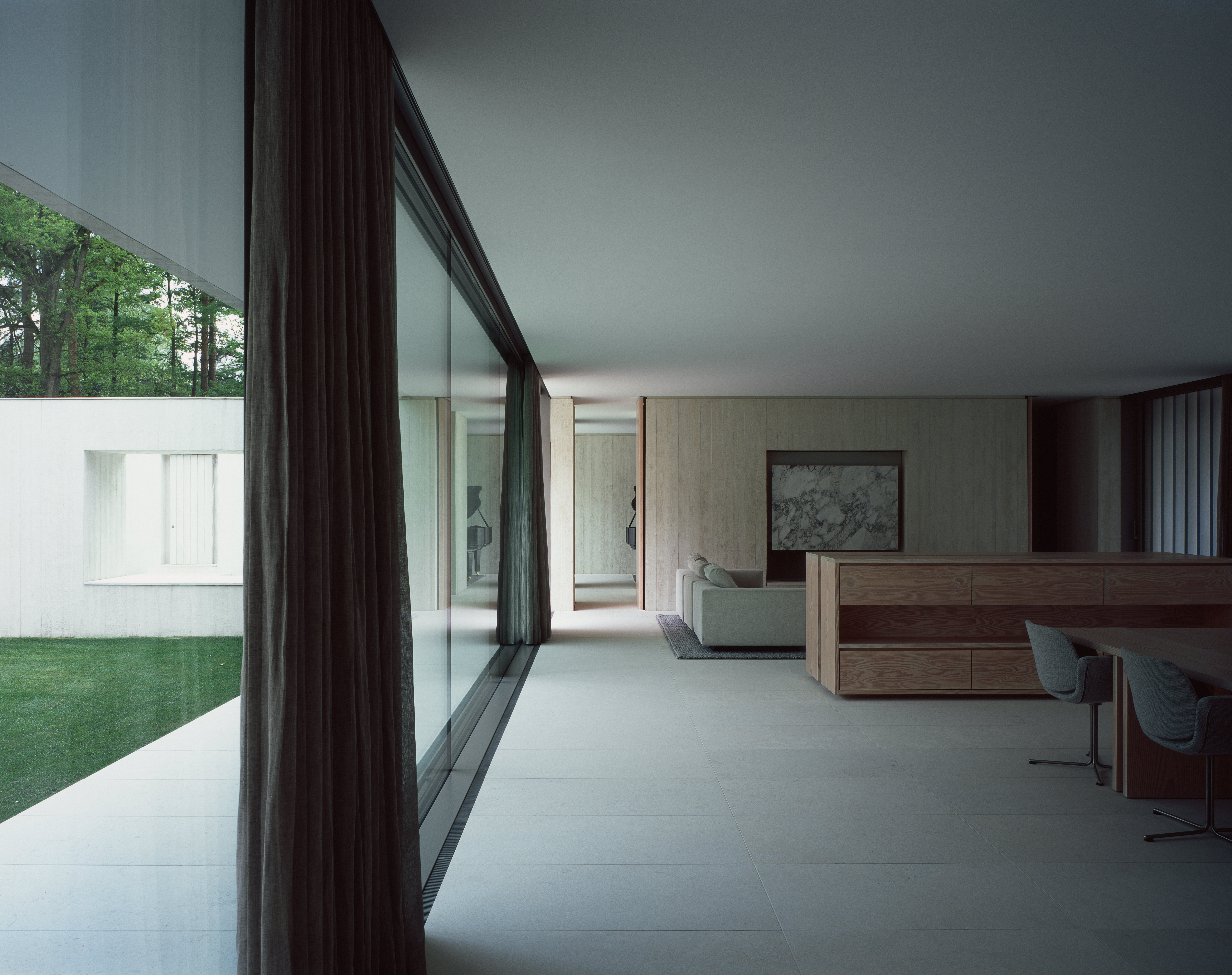
'This project actually came about because of Wallpaper*,' notes Australian-born, London-based architect Russell Jones, describing his client as 'very thorough'. Having bought the land, the client drew up a list of a dozen architects from around the world, including Jones, after he'd seen his brick apartment building in Notting Hill, west London, in our March 2006 issue. 'He liked the fact that I was very conscious of the use of natural materials.'
The site turned out to be a prime residential plot a few miles outside Eindhoven, set in a heavily forested, sandy landscape complete with maritime pines and large patches of white sand that locals use for sunbathing in the summer. The land was one of a tranche of residential plots owned by Dutch electronics giant Philips and sold off to senior management during the 1950s and 1960s to encourage them to move closer to its corporate HQ in Eindhoven. Several houses were built to the designs of Louis Christiaan Kalff, the company's polymathic design director, who oversaw the lighting for the Barcelona Pavilion, the Festival of Britain and the Philips Pavilion at Expo '58 in Brussels. Jones' client owned a low-built mid-century structure, stuffed with unique light fittings, in a perfect location on the wooded site.
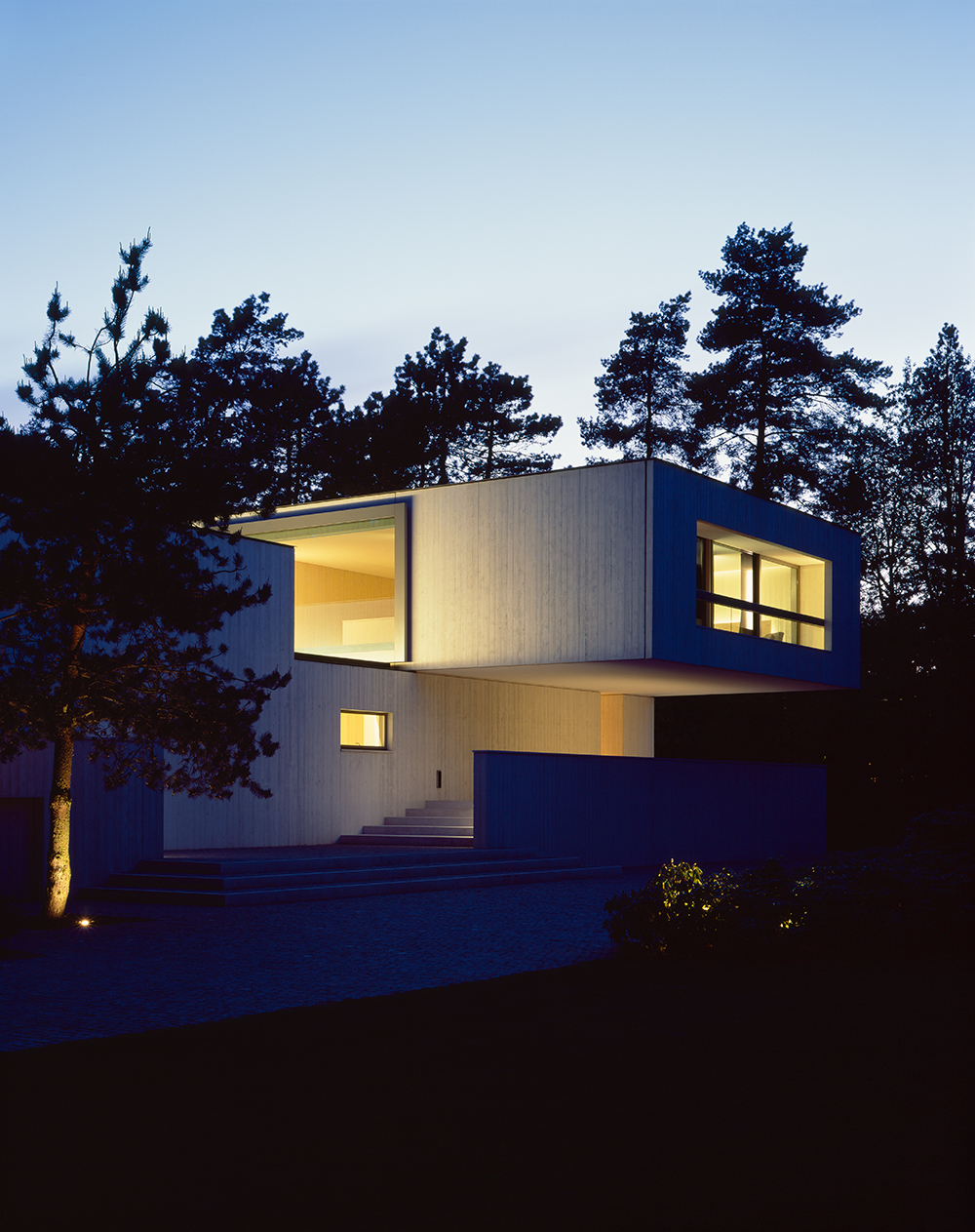
The entrance to Villa Waarle, near Eindhoven, steps up beneath a cantilevered ‘beam’ containing the bedrooms.
Despite his stature, Kalff 's involvement was no barrier to redevelopment. 'When I first went there, I thought it was a pretty damn good house,' says Jones. 'In the UK, it would certainly be listed.' Noting that several, better Kalffs existed, the only restriction the planners placed was the replacement structure should be of greater architectural merit.
Jones accepted the challenge. The brief was straightforward – modest, even – and called for a five-bedroom family home. The new house sits in the same south-facing orientation as the original, but Jones has taken advantage of the sandy site to excavate great chunks of new accommodation. As a result, Villa Waalre is uncommonly spacious. The house is arranged around a large ground floor living space, with two wings reaching south into the mature landscape – one contains the double-height kitchen and the other a study and enclosed terrace. Resting above these wings is a 'beam' containing the bedrooms, with the master suite placed centrally looking out over the garden via a long slender horizontal window and set-back balcony. In the basement is a 25m swimming pool, gym and photography studio, while to the west, a 50m tunnel has been carved out of the dunes to accommodate cars and serve as a second access route to the house.
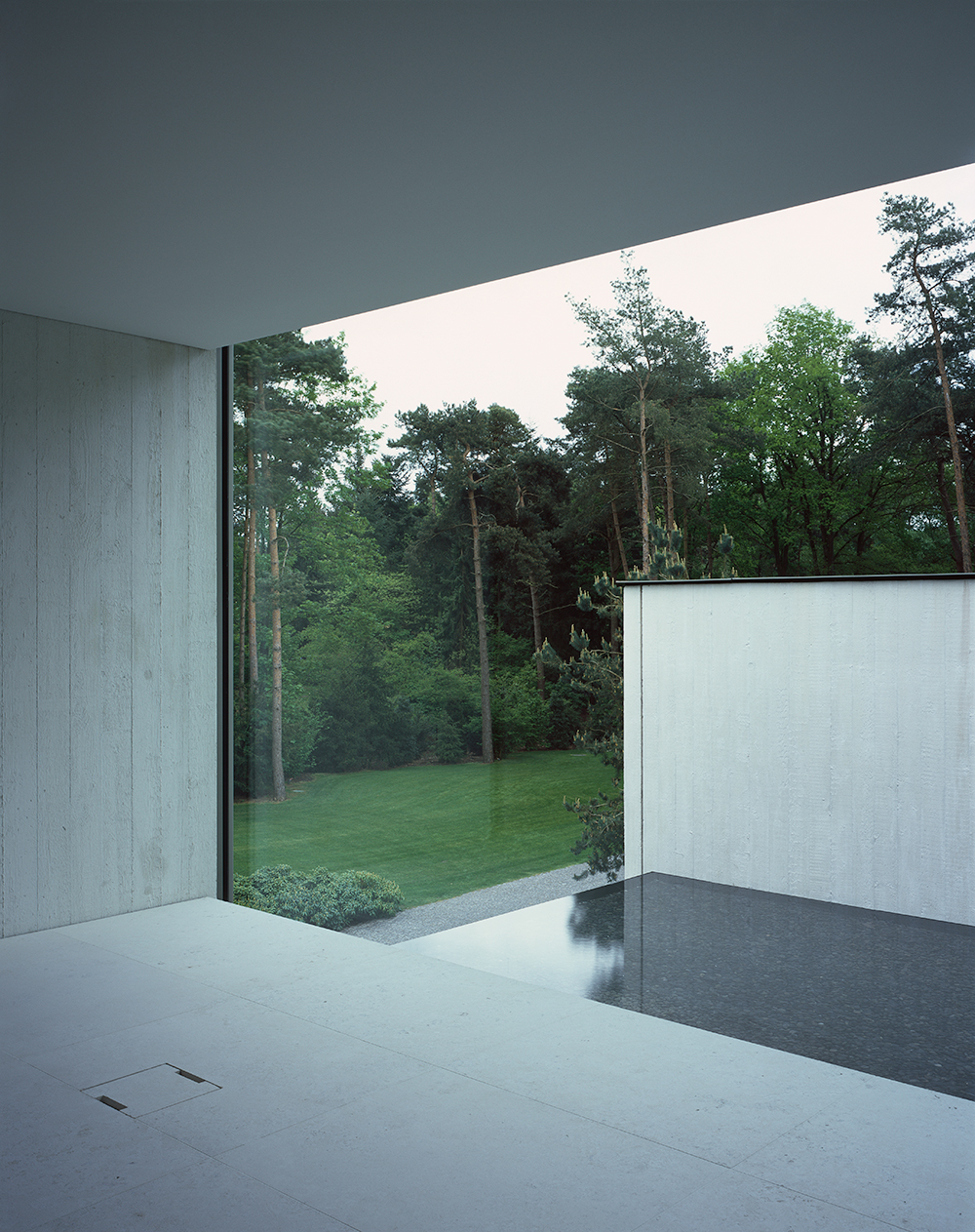
The view from the first floor gallery space across a reflecting pond.
The concrete house is a calm symphony of stacking, interlocking rectangles, and Jones' key organising device was the frame. 'The house is about creating and capturing views of the landscape – it's an architecture of connected spaces rather than rooms,' he says. The architect cites a few inspirations, notably Marcel Breuer's own house in Massachusetts, the archetypal modernist 'volume resting on a landscape'. Other references are more explicit, like the private enclosure on the ground floor that deliberately evokes the form and scale of the Barcelona Pavilion courtyard, while the reflecting pools scattered around the plan are carefully placed to enhance the views.
Those views are also shaped by the material choices. The surrounding forest inspired the decision to use shuttered concrete, and once the countless tons of sand had been removed, washed and sold in accordance with Dutch building regulations, over 4,000 tons of concrete was poured and the house took shape. The concrete was enriched with titanium dioxide, giving it a chalky white hue and making it almost completely impervious to water, even in the basement pool. It's also a perfect colour match for the Jura limestone flooring used throughout. Ceilings are finished in a special spray-on mix of crushed recycled glass and marble, while every bath, sink, fireplace and kitchen counter was carved from a single block of Statuario marble, carefully selected after several visits to the Italian quarry. 'There are effectively no painted finishes in the whole house,' says Jones. At every turn, detail is indulged, such as the kitchen joinery sharing the same 150mm wide boards and type of wood used in the shuttering (although rough-cut Russian fir boards were needed to get just the right quality of grain for the concrete). The structure was overseen by Arup Amsterdam, resulting in what Jones calls 'very pure engineering'.
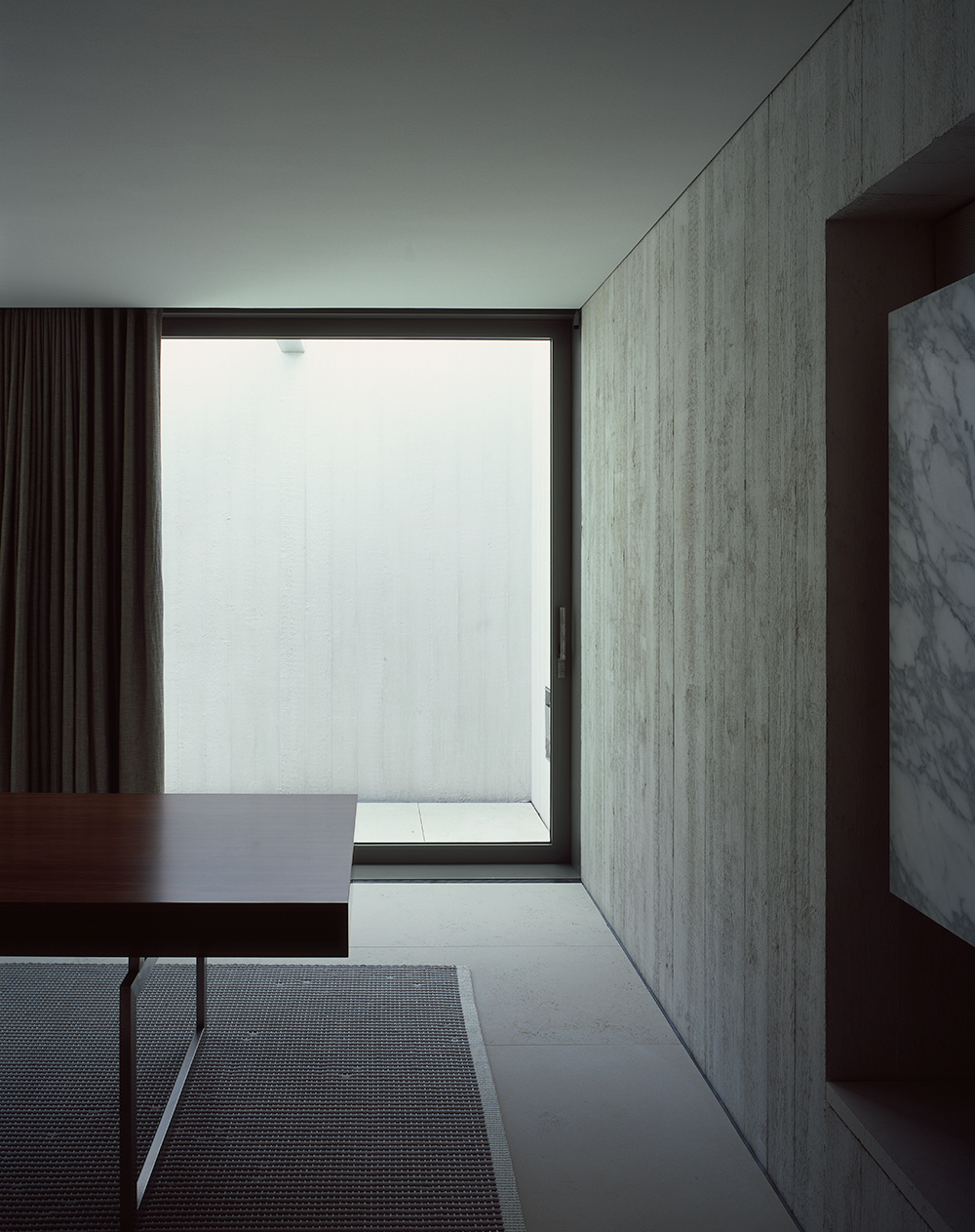
The view from the first floor gallery space across the ground floor study.
The massive complexity of a modern house hides under the skin. A two-storey plant room controls the 130 sq m of photovoltaic cells on the flat roof and the 16 bore holes that provide ground source heat, while fixtures and fittings, like lighting, speakers and tablet control, are all discreetly concealed. The material concerns of both client and architect are evident in the way everything has been put together. 'I don't continue to build in one material all the time,' says Jones. 'I work with materials that are appropriate for each situation.' The villa took eight years from start to finish, far longer than Jones' usual projects, which include houses in Portugal and New Zealand and his own in Highgate, London. The result honours the site and celebrates not just craft but Dutch pragmatism as well. 'The client didn't care that we were just a small office working out of London. It's not pretentious – it's a large but very humble home to live in.'§
As originally featured in the April 2015 issue of Wallpaper* (W*193)
INFORMATION
For more information, visit Russell Jones’ website
Receive our daily digest of inspiration, escapism and design stories from around the world direct to your inbox.
Jonathan Bell has written for Wallpaper* magazine since 1999, covering everything from architecture and transport design to books, tech and graphic design. He is now the magazine’s Transport and Technology Editor. Jonathan has written and edited 15 books, including Concept Car Design, 21st Century House, and The New Modern House. He is also the host of Wallpaper’s first podcast.
-
 The Bombardier Global 8000 flies faster and higher to make the most of your time in the air
The Bombardier Global 8000 flies faster and higher to make the most of your time in the airA wellness machine with wings: Bombardier’s new Global 8000 isn’t quite a spa in the sky, but the Canadian manufacturer reckons its flagship business jet will give your health a boost
-
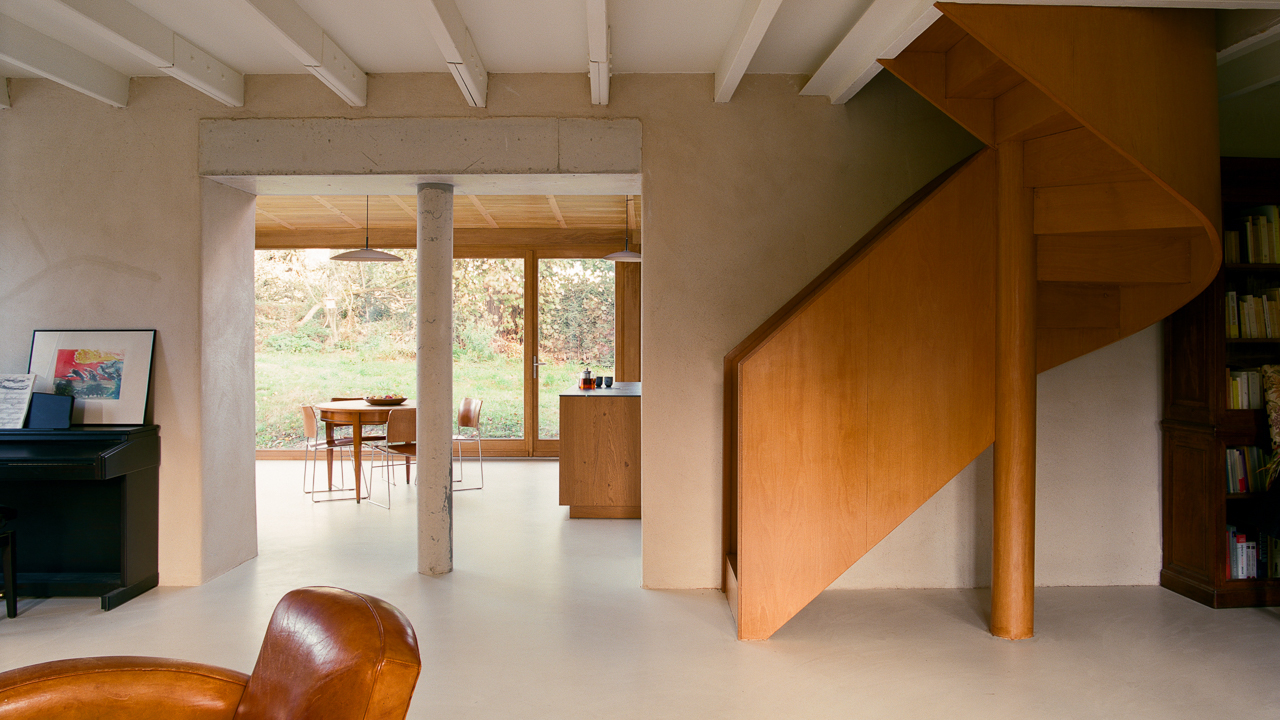 A former fisherman’s cottage in Brittany is transformed by a new timber extension
A former fisherman’s cottage in Brittany is transformed by a new timber extensionParis-based architects A-platz have woven new elements into the stone fabric of this traditional Breton cottage
-
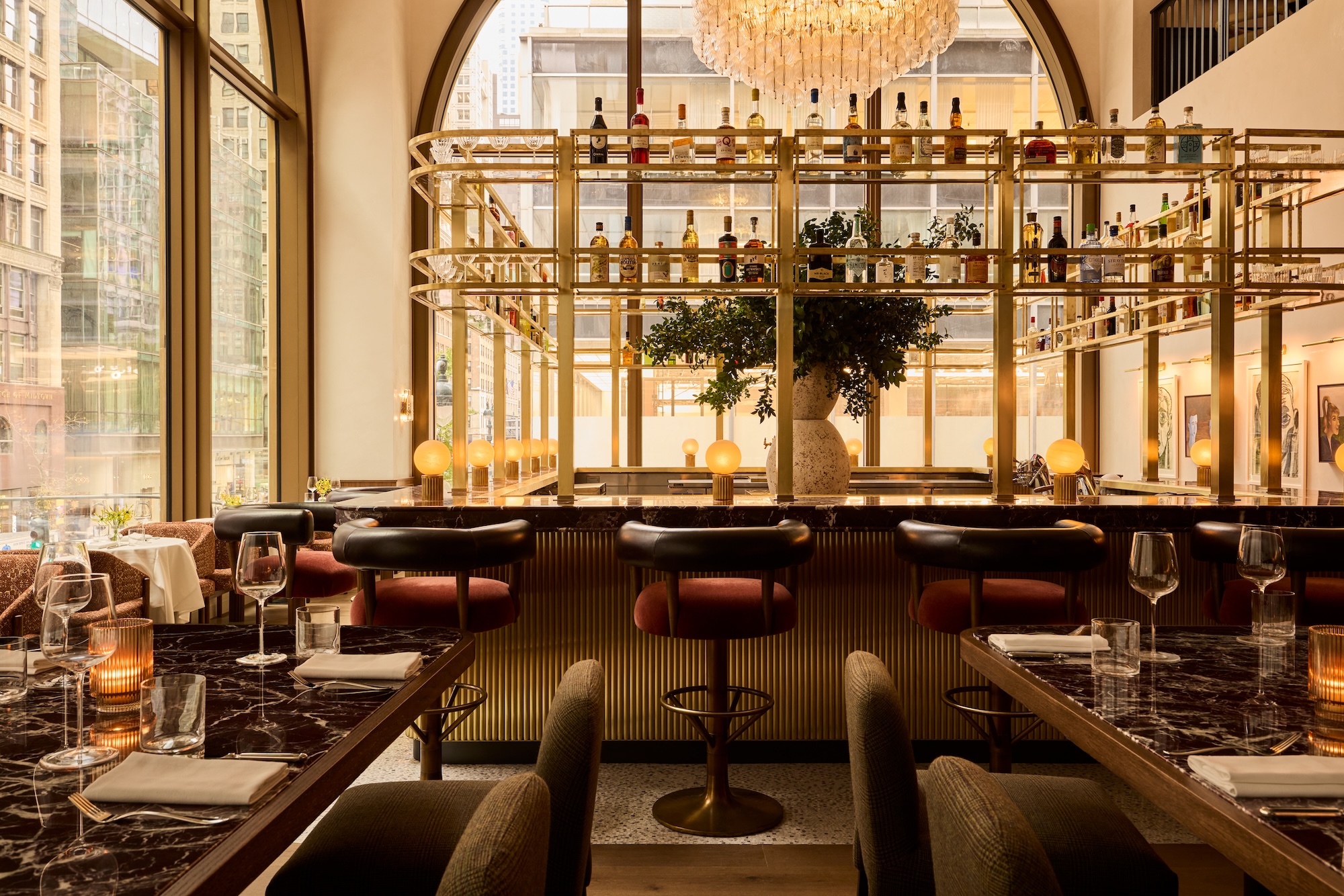 New York's members-only boom shows no sign of stopping – and it's about to get even more niche
New York's members-only boom shows no sign of stopping – and it's about to get even more nicheFrom bathing clubs to listening bars, gatekeeping is back in a big way. Here's what's driving the wave of exclusivity
-
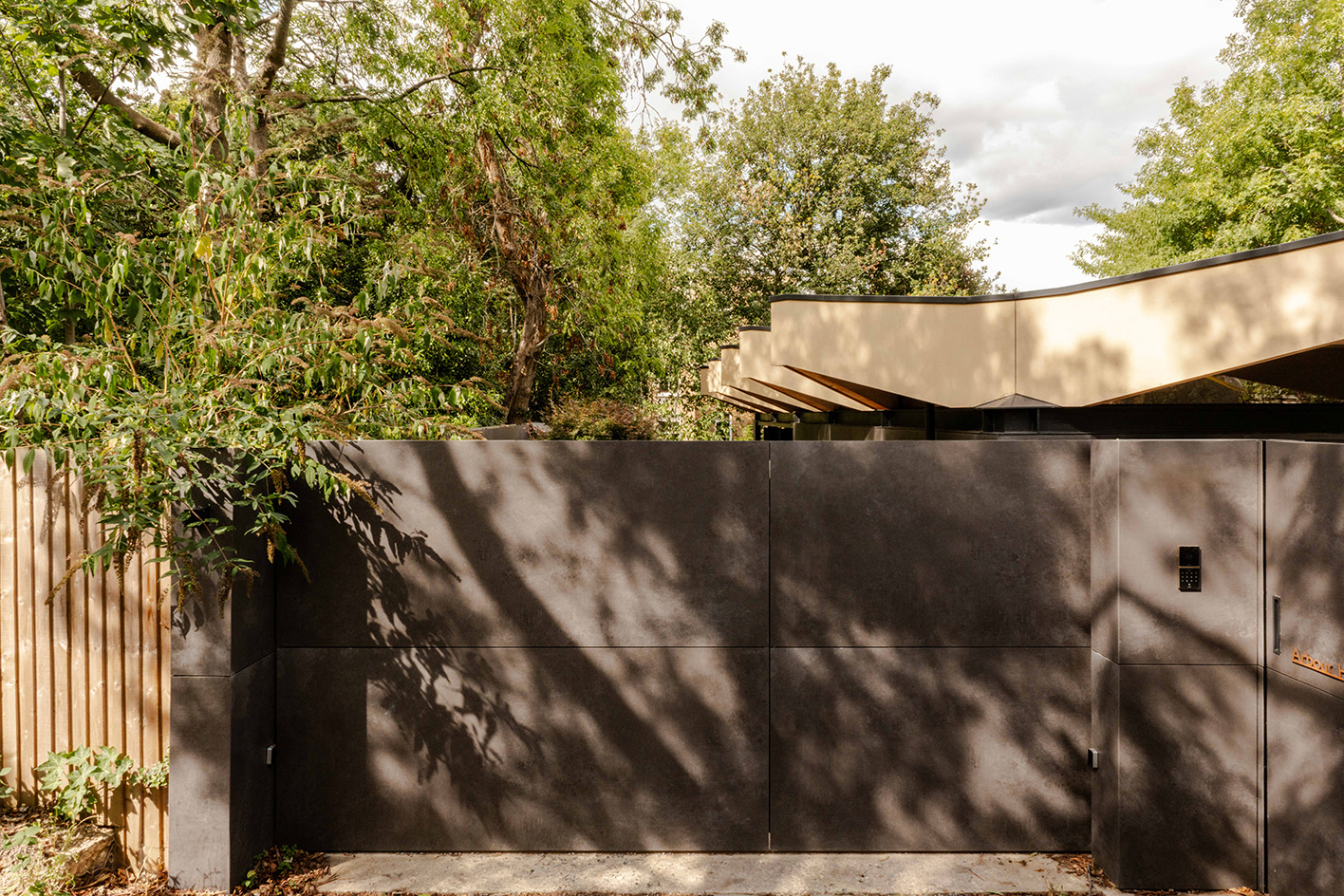 Arbour House is a north London home that lies low but punches high
Arbour House is a north London home that lies low but punches highArbour House by Andrei Saltykov is a low-lying Crouch End home with a striking roof structure that sets it apart
-
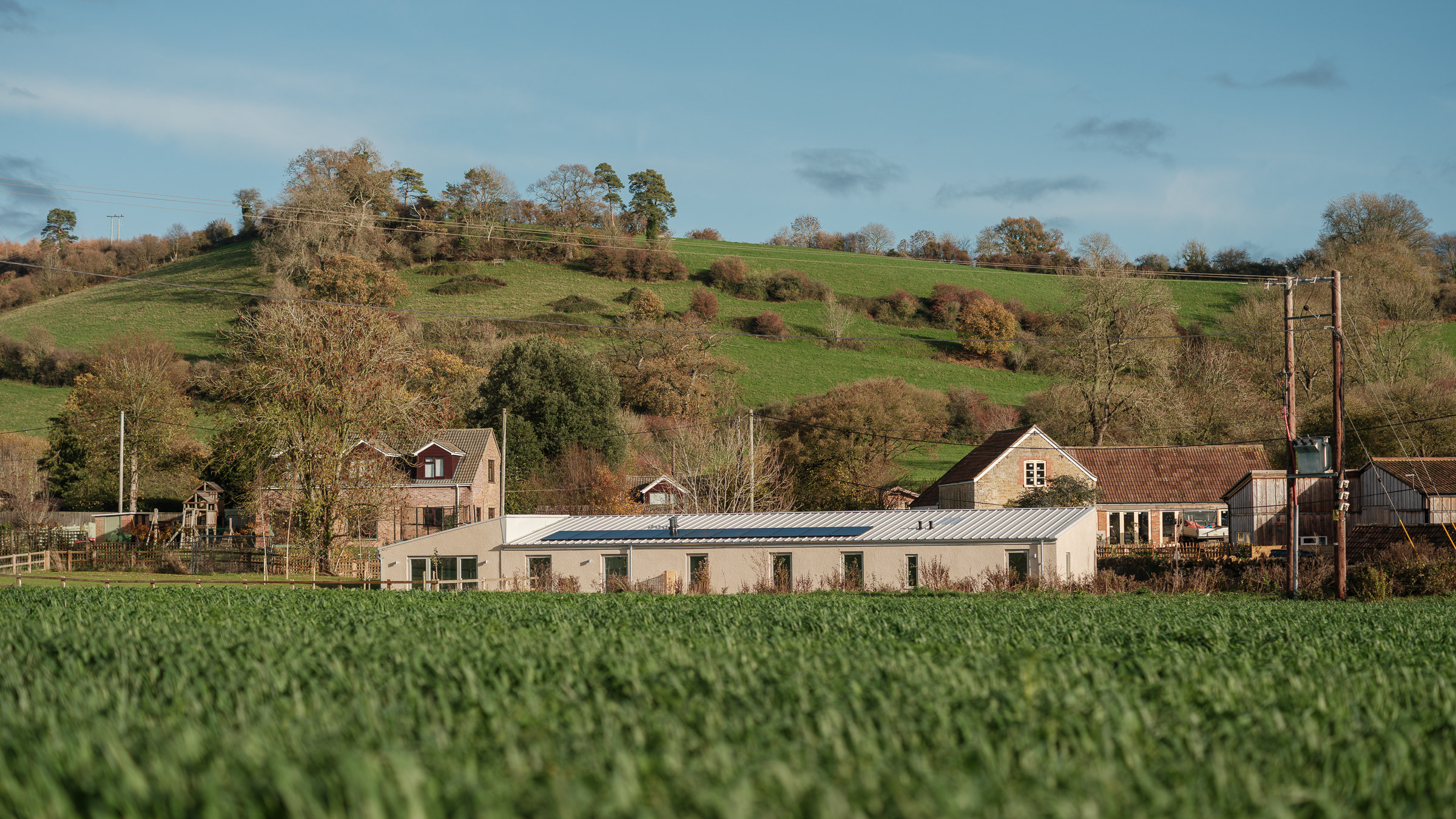 A former agricultural building is transformed into a minimal rural home by Bindloss Dawes
A former agricultural building is transformed into a minimal rural home by Bindloss DawesZero-carbon design meets adaptive re-use in the Tractor Shed, a stripped-back house in a country village by Somerset architects Bindloss Dawes
-
 RIBA House of the Year 2025 is a ‘rare mixture of sensitivity and boldness’
RIBA House of the Year 2025 is a ‘rare mixture of sensitivity and boldness’Topping the list of seven shortlisted homes, Izat Arundell’s Hebridean self-build – named Caochan na Creige – is announced as the RIBA House of the Year 2025
-
 In addition to brutalist buildings, Alison Smithson designed some of the most creative Christmas cards we've seen
In addition to brutalist buildings, Alison Smithson designed some of the most creative Christmas cards we've seenThe architect’s collection of season’s greetings is on show at the Roca London Gallery, just in time for the holidays
-
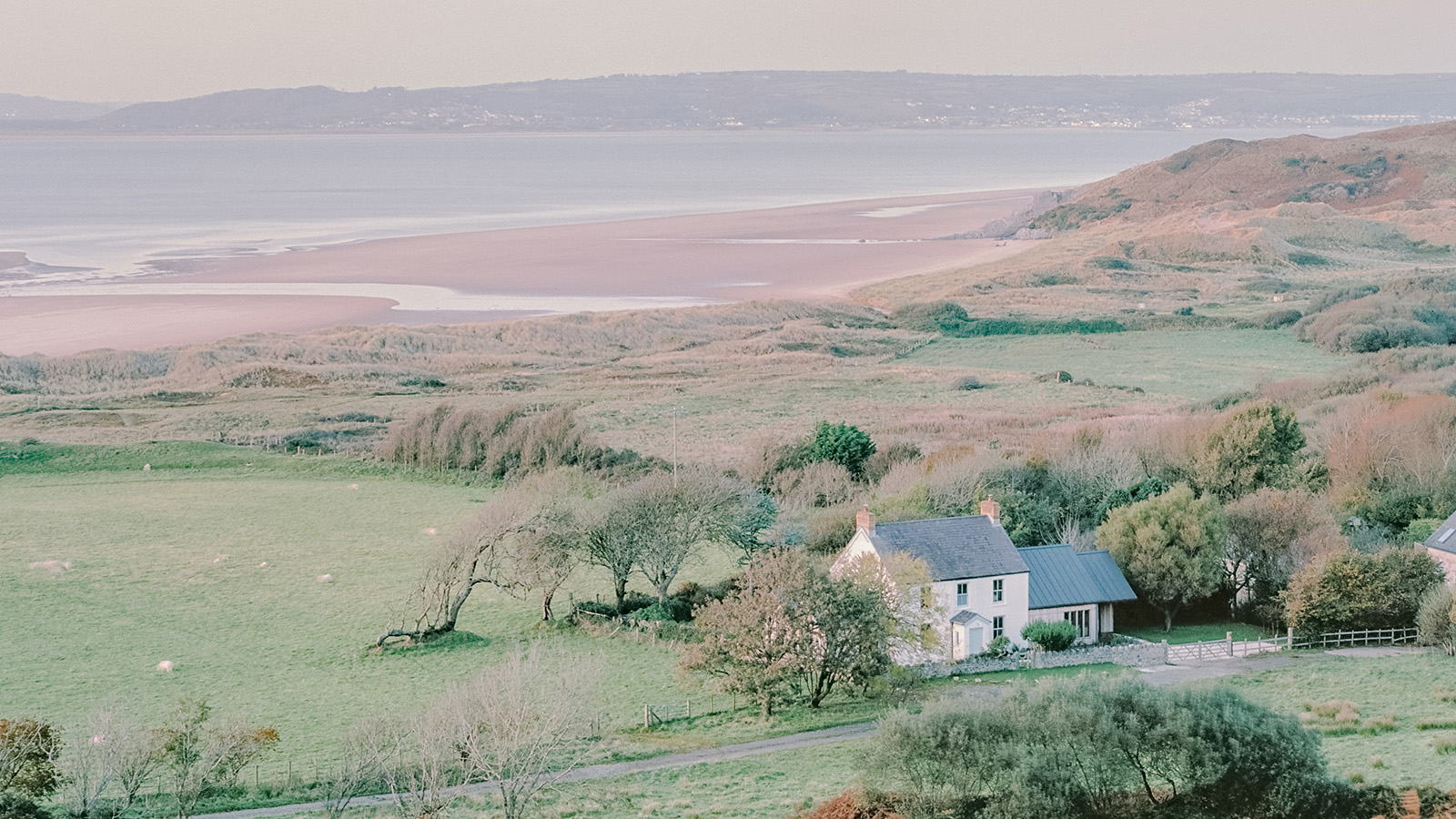 In South Wales, a remote coastal farmhouse flaunts its modern revamp, primed for hosting
In South Wales, a remote coastal farmhouse flaunts its modern revamp, primed for hostingA farmhouse perched on the Gower Peninsula, Delfyd Farm reveals its ground-floor refresh by architecture studio Rural Office, which created a cosy home with breathtaking views
-
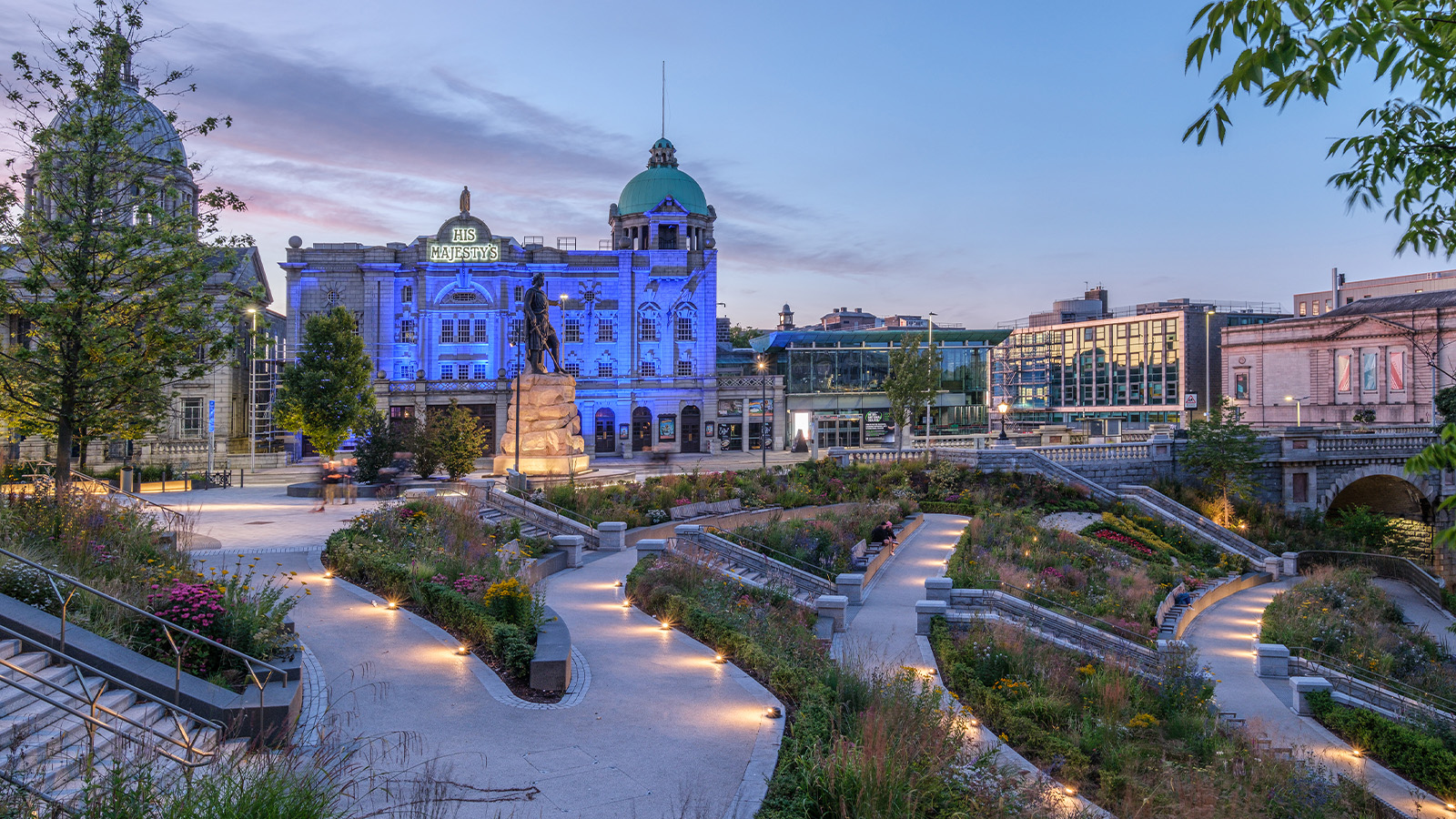 A revived public space in Aberdeen is named Scotland’s building of the year
A revived public space in Aberdeen is named Scotland’s building of the yearAberdeen's Union Terrace Gardens by Stallan-Brand Architecture + Design and LDA Design wins the 2025 Andrew Doolan Best Building in Scotland Award
-
 The Architecture Edit: Wallpaper’s houses of the month
The Architecture Edit: Wallpaper’s houses of the monthFrom wineries-turned-music studios to fire-resistant holiday homes, these are the properties that have most impressed the Wallpaper* editors this month
-
 A refreshed 1950s apartment in East London allows for moments of discovery
A refreshed 1950s apartment in East London allows for moments of discoveryWith this 1950s apartment redesign, London-based architects Studio Naama wanted to create a residence which reflects the fun and individual nature of the clients